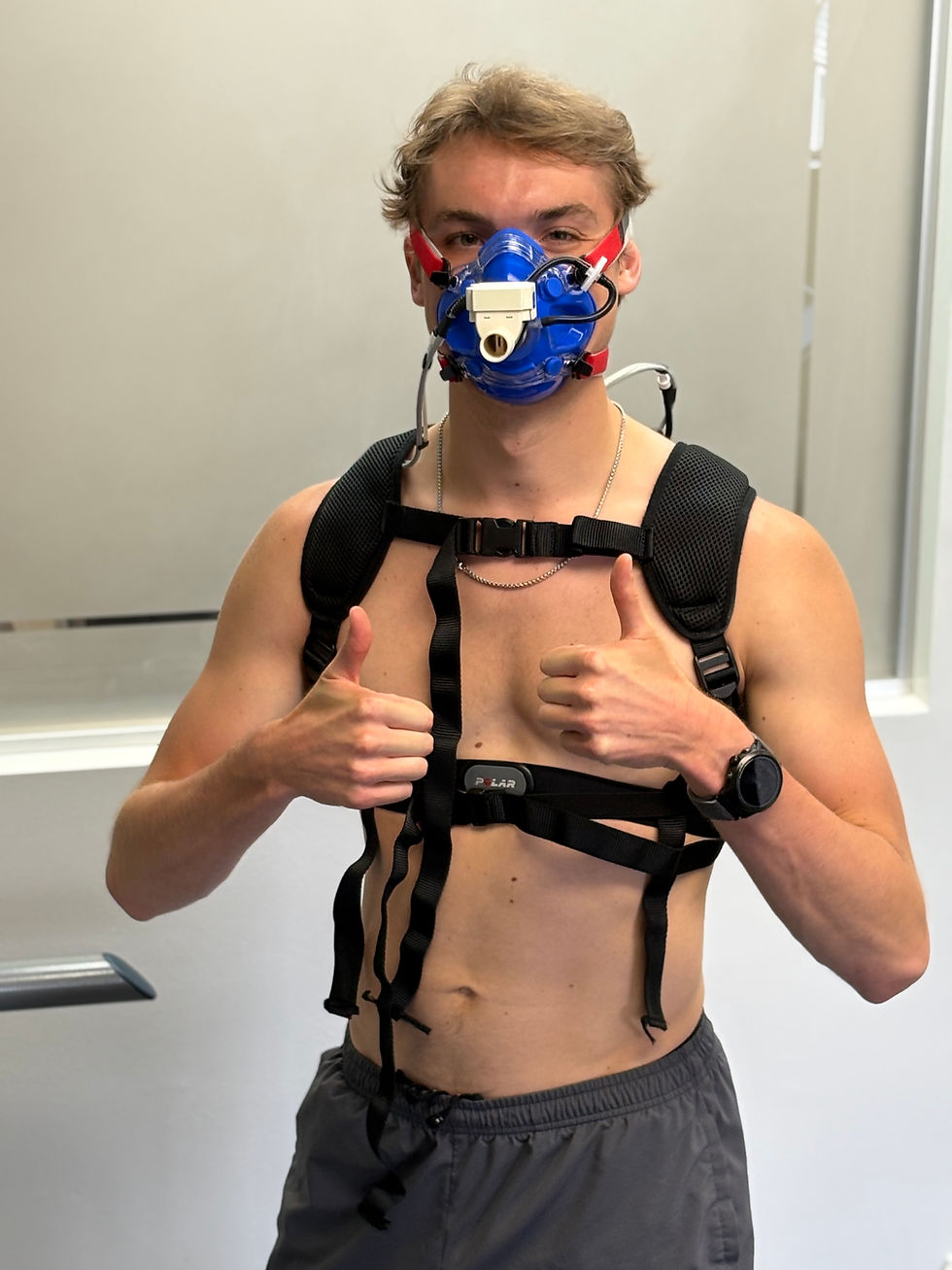Redefining the Off-Season: Why Stopping Now Could Set You Back Later
- Dr. Scott Christie

- Oct 8
- 3 min read
By Dr. Scott, ISHPLabs
Why the Off‑Season Really Matters

When your race season ends, it’s tempting to rest completely. That rest is necessary, but how you rest and when you restart matters just as much as your training. New research shows that even short breaks can reduce fitness noticeably. The good news: with smart monitoring and planning, you can protect your gains and return stronger than before.
What Happens When You Stop Training
When you take time off, your body begins to lose some of the adaptations it worked so hard to build. Here’s what the latest science (2015–2025) tells us:
Time Off | What Often Changes | Recent Findings |
~2 Weeks | VO₂max and stroke volume drop; muscles lose some power. | A 2021 study found trained runners lost up to 10% of their VO₂max after two weeks of no training. (PubMed 33517866) |
4–12 Weeks | Larger drops in aerobic capacity, power, and running economy; mild muscle loss possible. | A 2024 case study showed a 9–11% VO₂max decrease after 12 weeks off; retraining restored most values, but running economy lagged. (PubMed 39651431) |
>12 Weeks | Cardiac and metabolic efficiency decrease; higher resting heart rate. | Long-term detraining alters heart structure and recovery efficiency. (Frontiers 2023) |
Key takeaway: The longer the break, the more you lose and the longer it takes to rebuild. Even low-intensity movement helps preserve your fitness base.
Monitoring Recovery: HRV and Resting Heart Rate
Your recovery signals can guide how much rest you actually need. Two of the best tools are Heart Rate Variability (HRV) and Resting Heart Rate (RHR).
· HRV measures tiny changes between heartbeats. Higher HRV often means your nervous system is recovered and ready.
· RHR tends to rise when you’re fatigued or under stress.
Studies show HRV‑guided training improves endurance performance compared to fixed plans. A 2021 meta‑analysis confirmed HRV can help athletes optimize training loads and recovery (PubMed 33143175).
How to Use HRV Practically:
1. Measure HRV each morning in a consistent position.
2. Build a 2–3‑week baseline to find your normal range.
3. Look for trends, if HRV drops for several days, ease back or rest.
4. Combine HRV with RHR, sleep quality, and mood tracking for better accuracy.
Dr. Scott’s Advice: “Use HRV as your compass, not your map. It helps you know when to push and when to recover, but always consider how you feel.”
A Simple Off‑Season Plan
Here’s an easy framework to follow after your race season ends:
Phase | Duration | What to Do | Why It Matters |
Active Recovery | 1–3 weeks | Gentle cycling, swimming, yoga, walking, or mobility work. | Reduces inflammation and mental fatigue; prevents injury. |
Re‑Assessment | Weeks 3–5 | Lab or field testing (VO₂max, thresholds, strength, body composition). | Shows what you’ve maintained or lost; sets new training targets. |
Maintenance Load | After assessment until next build | Gradually increase training volume; include strength and cross‑training. | Keeps aerobic base strong without risking burnout. |
Dr. Scott’s Insight: “You don’t need to be in peak form all year. What matters is keeping enough of your foundation so retraining feels like building, not starting over.”
Why a Post‑Season Assessment Matters
Testing 3–5 weeks after your final race offers the most useful snapshot of your current physiology. You’re recovered but haven’t yet lost too much fitness.
At ISHP, we test:
· Aerobic and metabolic efficiency (VO₂ Max and Extended Endurance Testing)
· Muscle oxygenation and neuromuscular balance
· Body composition and recovery biomarkers
These results shape your next training cycle, identifying what needs work and what’s performing well.
Dr. Scott’s Core Takeaways
1. Take 2–3 weeks of active recovery, not full rest.
2. Test during weeks 3–5 to establish your new baseline.
3. Track HRV, RHR, and subjective recovery daily.
4. Use cross‑training and strength to stay fit and balanced.
5. Let data not guesswork guide your next build phase.
Start your next season smarter. Schedule your personalized post‑season fitness assessment at ISHP to track your physiology, plan your recovery, and perform at your best.
References
· Daskalova, E. et al. (2021). Two weeks of detraining reduce VO₂max and stroke volume in trained runners. European Journal of Applied Physiology.
· Cadegiani, F. et al. (2024). Twelve weeks of detraining and retraining in a master triathlete. Frontiers in Physiology.
· La Gerche, A. et al. (2023). Cardiac structure and detraining in endurance athletes. Frontiers in Physiology.
· Kiviniemi, A.M. et al. (2021). Heart rate variability–guided endurance training: A meta‑analysis. Sports Medicine.




Comments